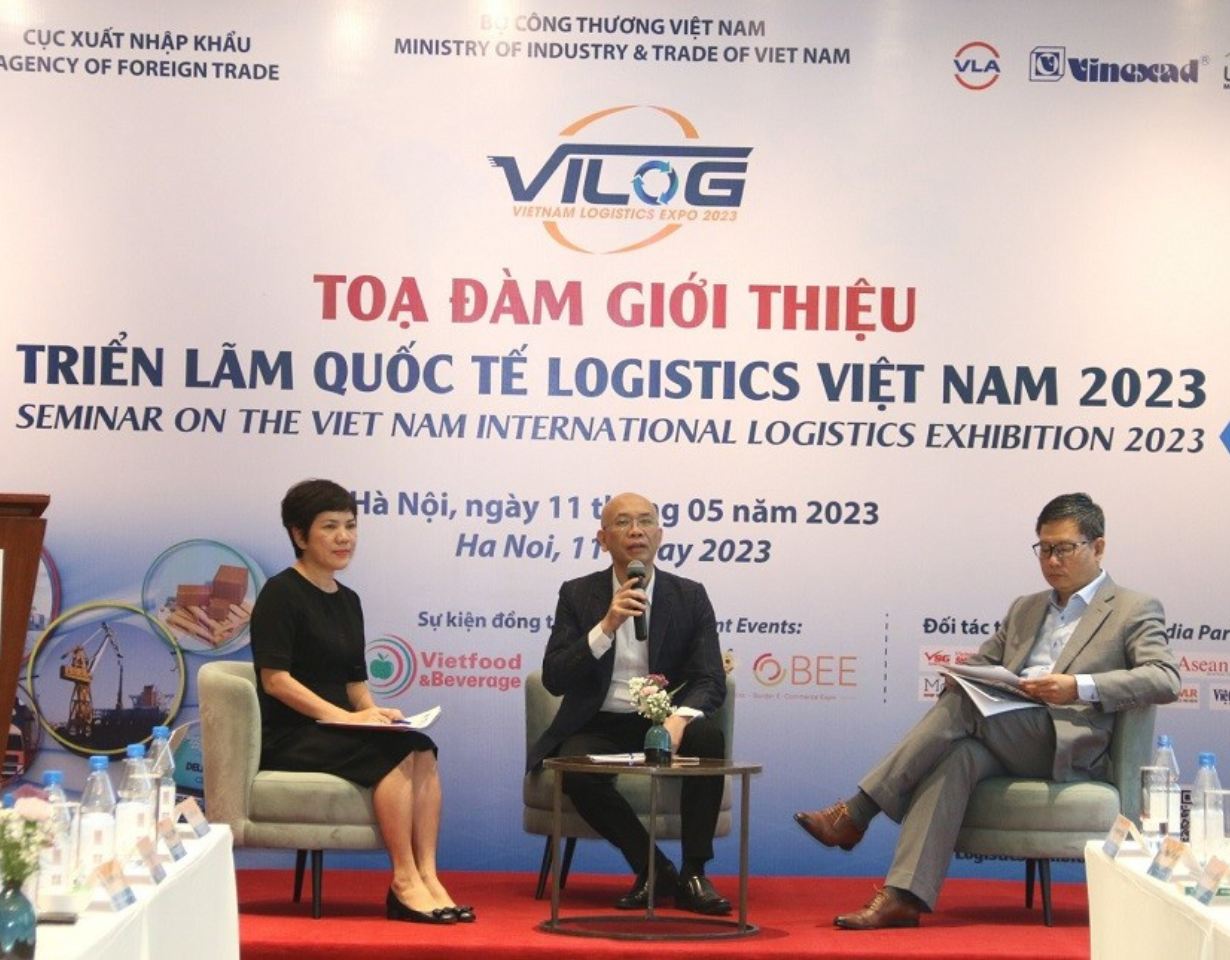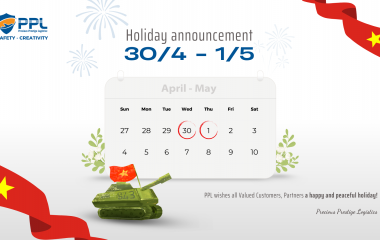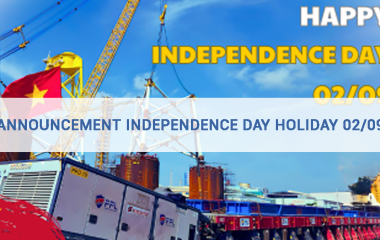Solving difficulties for Vietnam of logistics industry
According to experts, the logistics industry still needs to develop infrastructure connectivity, public-private cooperation to expand into logistics centers, and comprehensive supply chains in terms of circulation, processing, preservation, transportation, and distribution.
Logistics Vietnam has a scale of more than 40 billion USD/year
Thanks to its political and social stability and favorable geographical position, Vietnam is benefiting from a wave of supply chain shifts. Vietnam has taken advantage of its long coastline to have a seaport system with optimal capacity an optimistic economic growth rate, stable production, and a booming trade. E-commerce is developing rapidly in both export and domestic consumption directions, helping to improve competitiveness, becoming a center for the transshipment of goods in the world, and a "link" in the global supply chain. bridge. Vietnam is expected to become Asia's "logistics star" in the near future.
Besides advantages, difficulties, and challenges exist at the same time such as high service costs, and increasing pressure on infrastructure. According to experts, the logistics industry still needs to develop infrastructure connectivity, public-private cooperation to expand into logistics centers, and comprehensive supply chains in terms of circulation, processing, preservation, transportation, and distribution.
Talking at the seminar introducing Vietnam Logistics Exhibition 2023 on May 11 in Hanoi, Mr. Tran Thanh Hai, Deputy Director of the Import and Export Department (Ministry of Industry and Trade) said that logistics is defined as a service industry. plays an important role in the overall structure of the national economy, plays the role of supporting, connecting, and promoting socio-economic development of the whole country as well as each locality, contributing to improving the competitiveness of the economy.

Over the past years, Vietnam's logistics industry has made significant progress with an average rate of 14-16% a year, with a scale of 40-42 billion USD/year. The number of businesses and the quality of logistics service business is increasing, making a significant contribution to bringing the result of import and export of goods to the highest level ever of USD 732.5 billion, up 9.5% compared to 2021. According to Agility's assessment in 2022, Vietnam ranks 11th in the group of 50 global emerging logistics markets.
This is the result of the efforts of logistics service enterprises, and the Government in creating a business environment, improving the competitiveness of enterprises in the economy in general, and the field of business activities logistics service activities in particular as well as efforts to improve the business itself", Mr. Hai assessed.
Missing and weak
However, Mr. Hai frankly admitted, Vietnam's logistics industry still has many weaknesses such as high logistics costs; a lack of linkage between logistics enterprises with each other and production, trading, import, and export enterprises; The scale and financial potential of Vietnamese logistics enterprises are still weak, and the going to foreign markets is still insignificant...
With the same opinion, Mr. Cap Trong Cuong - General Director of Vietnam Container Corporation (VICONSHIP) said that if domestic logistics enterprises split into specialized fields, they are not inferior to foreign countries. However, in general, Vietnamese businesses still have to work on their own playing field because foreign investment (FDI) businesses in Vietnam mainly invest in technology and human resources.
"We have a lot of big customers, but the reality is that businesses are still employees. We have the infrastructure, human resources, processes, and trust of foreign partners, but we are still working for them. The linkages of Vietnamese businesses are very weak, making the industry not develop commensurate with its potential, and at the same time making logistics costs high," said Mr. Cuong.
Mr. Cuong admitted that the interaction, support, and linkage of Vietnamese logistics enterprises are very weak. On the market today, there are many well-known enterprises with large capitalization and relatively good networks like VICONSHIP. However, the low reciprocity is the reason why Vietnam's logistics sector has not really developed in accordance with its importance. This is what makes logistics costs soar.
Therefore, Mr. Cuong recommends that businesses need to support each other in the most practical ways so that all can reduce costs.
In addition, it is necessary to make breakthrough changes in technology to meet the needs of the market, towards a green environment in line with the trend of the times.
Cold supply chain in the logistics industry
Sharing the experience of developing the logistics industry in China, Mr. Hau Hong Bang, Vice President and representative of the Import-Export Chamber of Commerce of Guangdong province, said that after the birth and strong development speed of e-commerce logistics companies need to work together to deal with e-commerce. This has formed a model of cooperation to connect and support each other in logistics.
Mr. Hau Hong Bang added that the development of e-commerce has improved the quality of modernized management of the logistics industry. The only management and operation mode of traditional logistics can no longer meet the needs of e-commerce, so the software management system and corresponding hardware support facilities of the logistics industry also need to be upgraded. upgrade, improve, and develop.
“Another problem in logistics is the cold supply chain. The products in the field of e-commerce are mainly consumer goods, of which food accounts for a very large proportion. For food transportation will certainly be more difficult, many foods that need to be kept fresh must be transported through the cold supply chain, clearly demonstrating the importance of logistics in the field of e-commerce,” Mr. Hong Bang said.
Parcel Performance and iPrice Group conducted a survey of 80,000 e-commerce consumers in Singapore, Malaysia, Vietnam, Thailand, and Indonesia in 2019. The results show that the main factors are currently limiting the growth of commerce. E-commerce in Southeast Asian countries is a courier service.
The survey shows that online shopping consumer satisfaction is directly proportional to delivery time, the longer the delivery time, the lower the customer satisfaction. Among the 5 surveyed countries, Vietnam's average express delivery time is up to 5.6 days, showing that the quality of Vietnam's express service needs to improve a lot.
Related Posts
New Posts
- NOTICE OF NATIONAL DAY HOLIDAY – SEPTEMBER 2ND PROUD TO BE VIETNAMESE
- PPL successfully performs site-move and load-out of record-breaking 4,000-ton offshore substation topside fabricated by PV Shipyard
- HOLIDAY ANNOUNCEMENT: REUNIFICATION DAY & INTERNATIONAL LABOR DAY (April 30 - May 1, 2025)
- ANNOUNCEMENT OF HUNG KINGS’ COMMEMORATION DAY 2025
- PTSC Thanh Hoa and PPL Sign Strategic Partnership
- INDEPENDENCE DAY HOLIDAY ANNOUCEMENT

_cr_380x240.jpg)


_cr_380x240.png)


Comments